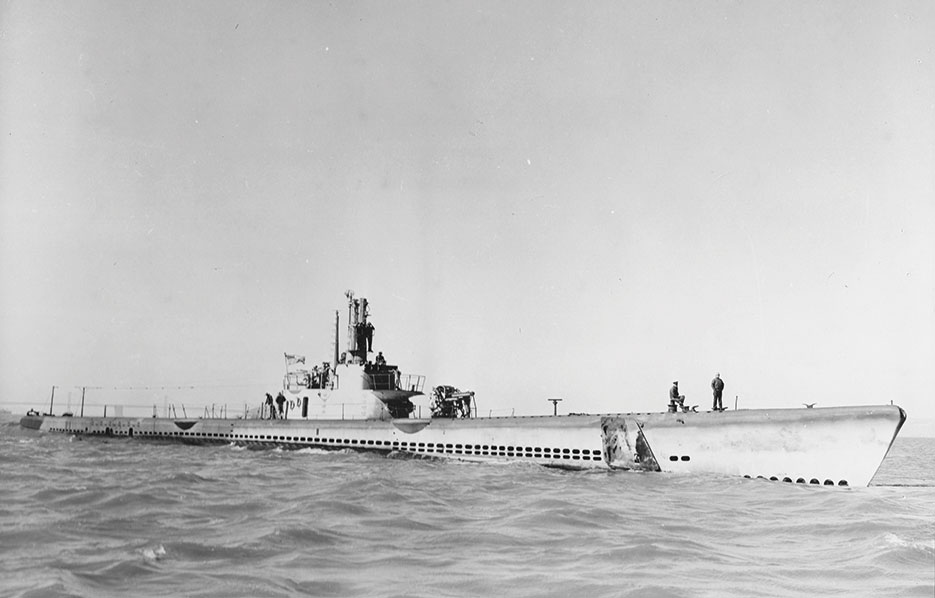The Wolfpack Tactics: Strategy and Success in Naval Warfare
The Wolfpack Tactics: Strategy and Success in Naval Warfare
The concept of a "wolfpack" refers to a tactic used primarily by submarines, where a group of submarines coordinates attacks on enemy convoys, overwhelming them with sheer numbers and surprise. This method was notably employed by Nazi Germany during World War II, where U-boats, or submarines, would form wolfpacks to target Allied merchant shipping and naval vessels across the Atlantic and other strategic waterways.
The wolfpack strategy was both innovative and deadly. By attacking in groups, the German U-boats were able to inflict devastating damage to the Allied supply lines, which were crucial to the war effort. This tactic, however, was not without its challenges, and its success varied depending on the Allies’ ability to adapt their countermeasures. In this blog, we will explore the origins of the wolfpack, its use during World War II, and its impact on naval warfare.
The Birth of the Wolfpack Tactic
The idea of the wolfpack tactic was largely attributed to German Admiral Karl Dönitz, who recognized the potential of using submarines in coordinated attacks rather than operating individually. The traditional method for submarine warfare involved individual U-boats scouting and attacking merchant ships on their own. However, this method was less effective against well-protected convoys that were escorted by warships.
The wolfpack approach, pioneered by Dönitz, involved grouping several U-boats together and allowing them to hunt down convoys as a collective force. This made it much harder for Allied forces to protect their ships, as the submarines would come from different directions and overwhelm the convoy’s defenses. The wolfpacks would use stealth, speed, and surprise to launch simultaneous attacks on vulnerable merchant vessels.
The Role of Wolfpacks in World War II
During the Battle of the Atlantic, which was one of the longest and most crucial battles of World War II, German U-boats formed wolfpacks to disrupt the Allied supply lines. The Allies depended on convoys to transport goods, food, and war materials from North America to Britain, and the wolfpacks proved to be a deadly threat to this vital supply chain.
At the height of the U-boat campaign, German submarines used advanced radio communications to coordinate attacks, allowing them to strike in waves and increase the chances of success. These attacks were coordinated by Dönitz, who used intelligence from reconnaissance aircraft, codebreaking efforts, and even captured ships to track convoy routes.
The wolfpack tactic was highly effective in the early years of the war. In 1940 and 1941, U-boats destroyed large numbers of Allied merchant vessels, leading to significant losses. This period is often referred to as the “Happy Time” for German submariners, as the wolfpacks had great success, sinking thousands of tons of Allied shipping.
However, as the war progressed, the Allies began to develop countermeasures. The introduction of radar, improved sonar, and air escorts for convoys helped reduce the effectiveness of the wolfpacks. Additionally, the development of depth charges, hedgehog anti-submarine weapons, and the breaking of the German Enigma code allowed the Allies to intercept and attack U-boat wolfpacks before they could strike.
The Decline of the Wolfpack Tactic
By 1943, the tide of the Battle of the Atlantic began to turn in favor of the Allies. The success of Allied anti-submarine warfare techniques, including the increased use of sonar (ASDIC), depth charges, and long-range air support, made it much harder for wolfpacks to operate effectively.
The introduction of the convoy system, in which ships would travel in tight formations with close escort protection, made it more difficult for German U-boats to find vulnerable targets. Moreover, the Allied efforts to intercept U-boat communications using codebreaking techniques rendered many German attacks ineffective.
The Allies’ technological advancements and the improved coordination of their naval forces eventually led to the destruction of many U-boats, including the dismantling of several wolfpacks. By the end of the war, the U-boat threat had been significantly reduced, and the wolfpack tactic was no longer the effective weapon it had once been.
The Legacy of the Wolfpack
While the wolfpack strategy was largely defeated during World War II, its influence can still be seen in modern naval tactics. The principle of coordinating attacks in groups rather than relying on individual units has been applied in various forms, both in naval and other military operations.
In contemporary warfare, the concept of a "wolfpack" has been adopted for other forms of asymmetric warfare, including guerrilla tactics and operations involving unmanned drones or missile strikes. The success of the wolfpack in WWII demonstrated the power of coordination and surprise in military tactics, and this lesson has been applied to modern military operations.
Furthermore, the wolfpack's impact on naval strategy is often studied in military academies to understand how smaller forces can take on more powerful enemies through strategic coordination and the element of surprise.
The wolfpack strategy employed by Nazi Germany’s U-boats during World War II was a revolutionary approach to naval warfare, allowing a relatively small fleet of submarines to inflict significant damage on the vast convoys of the Allied powers. The success of the tactic, particularly in the early stages of the war, was a testament to the innovation and effectiveness of Admiral Karl Dönitz’s vision.
However, as technology advanced and the Allies adapted their tactics, the effectiveness of the wolfpack strategy declined. The battle between the U-boats and the Allies in the Battle of the Atlantic was a critical turning point in World War II, and the legacy of the wolfpack serves as an important lesson in military strategy: that even small, coordinated forces can have a significant impact when they strike decisively and unexpectedly.
Share With Friends And Always Check For New Blog And History Post


